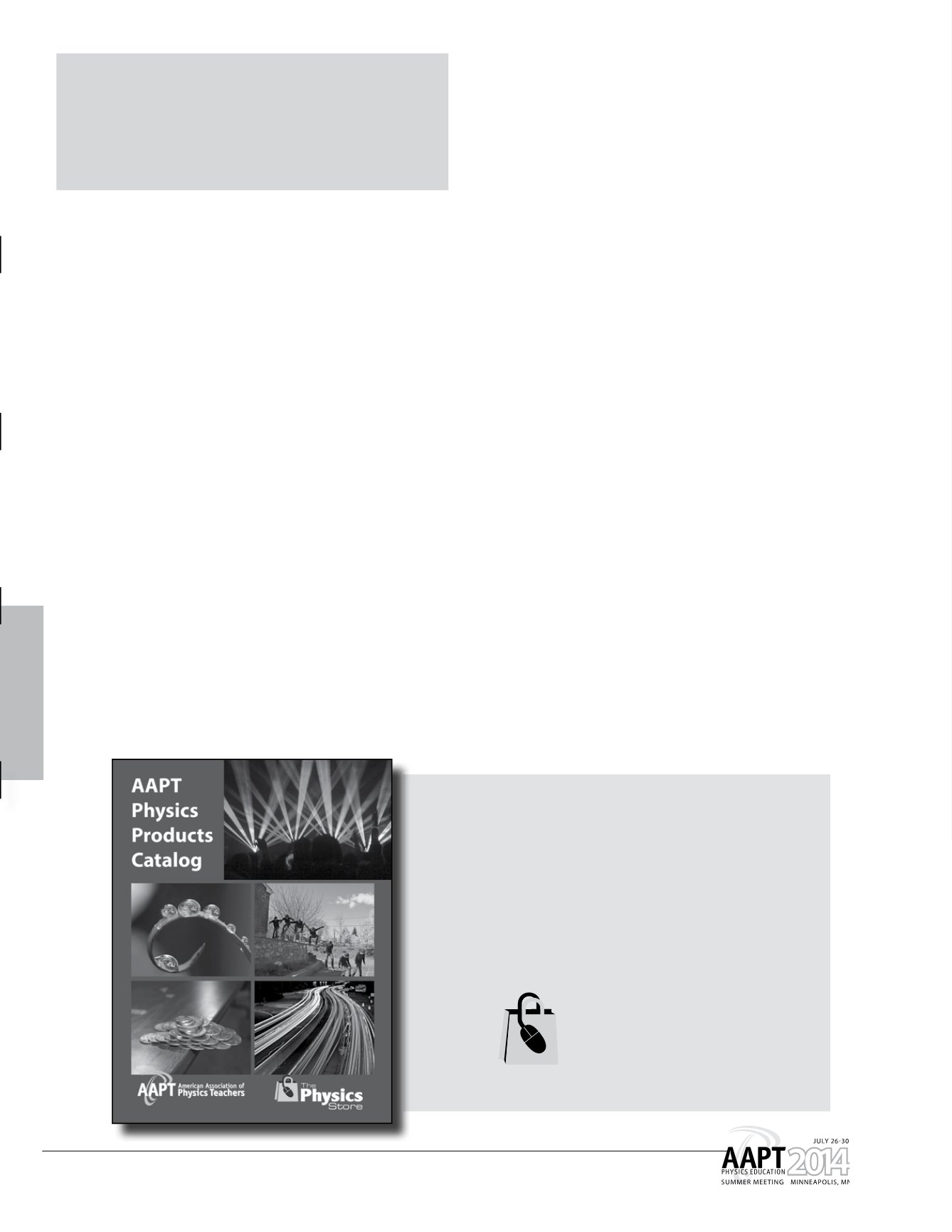
110
Tuesday afternoon
Session EJ: Technologies
Location: STSS 230
Sponsor: AAPT
Date: Tuesday, July 29
Time: 2–3 p.m.
Presider: Gary Baier
EJ01: 2-2:10 p.m. Effect of Electronic Homework on Small
College Physics Courses
Contributed – Kristen A. Thompson, Loras College, Dubuque, IA 52004-0178;
This report describes the impact of switching to an online homework sys-
tem (Moodle) in a small liberal arts college environment for introductory
algebra and calculus-based physics courses. As a first step, this study looks
at the online homework’s effectiveness by examining homework and test
scores on both conceptual and numerical problems. This study also looks
at the effect of online homework on instructor-student interaction and best
practices working within the constraints of the Moodle system.
EJ02:
2:10-2:20 p.m. Student Strategies When Doing Problems
Contributed – David Pritchard, MIT, 77 Massachusetts Ave., Cambridge, MA
02139;
John Champaign, Qian Zhou, Kimberly Colvin, MIT
Raluca Teodorescu, George Washington University
Using complete logs of student activities from Massive Open Online
Courses (MOOCs), the RELATE group (
has
examined student strategies when doing problems. When students get an
answer wrong, what resources do they use most frequently, for the longest
time, and in which order. For example, do they look at worked examples
and then read the textbook—or the other way around? What strategy
correlates with outcomes (if any) such as score on assessment, skills as de-
fined by Item Response Theory, improvement in skill over the course and
pre-/post-testing. The wide distribution of demographics and skills that
MOOCs allow provides new challenges in isolating the habits of learning
and resource usage of various student cohorts. This is part of the overall
RELATE program for discovering the specifics of learning in the first-year
undergraduate physics domain.
EJ03:
2:20-2:30 p.m. iDevices as Lab, Data, & Analysis Tools
Contributed – Taoufik Nadji, InterlochenArts Academy, 4000 Highway M-137
Interlochen, MI 49643;
The presenter will share a variety of experiments (including the one fea-
tured in TPT) that he conducts in his classes using iDevices (iPads, iPods,
& iPhones) as data gathering, analyses, and lab tools. The presentation
will feature actual footages of the said experiments as conducted with the
students and the attendees will participate in at least two such experiments.
EJ04:
2:30-2:40 p.m. Physics of the Beatles
Contributed – David Keeports, Mills College, Department of Chemistry and
Physics, Oakland, CA 94613;
The Beatles made their first Ed Sullivan Show appearance on the evening
of Feb. 9, 1964. I will present a talk that I wrote for my students to com-
memorate the 50th anniversary of the arrival of Beatlemania in America.
Innovation pervades the songs of the Beatles, and much of that innovation
lies in sound recording techniques pioneered by their young engineer,
Geoff Emerick. I will focus upon recording techniques in Beatles songs that
are accessible to introductory physics students. Topics I will discuss include
the audible spectrum of a guitar band, the use of vocal doubling, the bright
sound of Vox amplifiers, novel uses of microphones and speakers, guitar
feedback as musical sound, sound sampling, and envelope reversal. I will
present numerous sound demonstrations that I constructed by using Logic,
Apple’s digital audio workstation.
EJ05:
2:40-2:50 p.m. Learning Astronomy from “Experience”
Contributed – Kara Beauchamp, Cornell College, Mount Vernon, IA 52314;
Many students come into our introductory astronomy classes with very
little experience with the nighttime (or even the daytime) sky, yet they take
concepts such as the structure of the solar system as self-evident, because
they have been taught them from such a young age. While knowledge
of the structure of the solar system is an important part of our scientific
heritage, it is equally important for students to gain an appreciation of how
that knowledge was developed. One step in that process is understand-
ing retrograde motion of planets in the sky. It’s one thing to read about
retrograde motion and look at images in a textbook, and another thing
to “observe” retrograde motion. Here I present an assignment in which
students use a free planetarium program to simulate observation of the po-
sition of Mars over different timescales for several years, and then describe
those observations.
Physics
The
Store
Browse our online catalog
for physics books and
other products!


